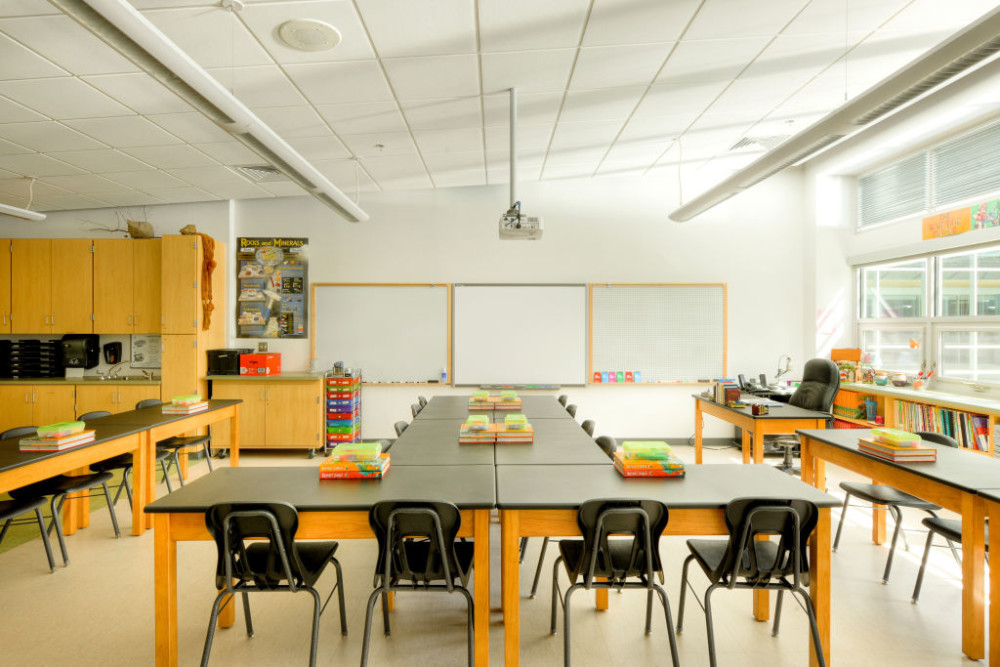
by Michael J. Holtz, FAIA, NCARB, LEED AP
Daylighting is an integral part of architectural design. After all, building occupants want a physical and psychological connection to the outside world. We evolved under sunlight; our Circadian rhythms—governing daily living cycles, influencing our mood, and controlling our sleep patterns—developed in response to a connection to the outdoors. Unfortunately, how many design/construction professionals approach daylighting can be problematic.
Windows, skylights, and atria connect interior spaces with the exterior environment. These apertures also define and shape the architectural character of the building, and thus are important elements of architectural design. Throughout history, they have served multiple functions, from views and fresh air to emergency egress and even communication. After the oil embargo of the mid‐1970s, use of these apertures for their lighting-energy-saving potential—in other words, turning off or dimming electric lights when adequate daylight levels exist—has become an established strategy in new and existing commercial buildings. However, this has had some serious unintended consequences.
Many building owners and architects now view daylighting as they do other energy-saving design strategies, such as increased envelope insulation levels or more efficient HVAC and electric lighting systems. The inherent benefits of views, occupant well-being and health, improved productivity, and psychological connection to the outdoors are often forgotten or diminished. Instead, rigid energy-related cost-benefit analysis has taken their place.
Building owners and developers are now asking their architects, “What is the payback or return on investment (ROI) on integrating these daylighting strategies and daylight-responsive electric lighting controls into my building?” This ROI calculation can only consider the energy savings achieved by turning off electric lights, however; it cannot include any of the occupant productivity, well-being, and health-related benefits. With such a rigid definition of ROI, it is nearly impossible to achieve a satisfactory economic payback.
This whole matter has been compounded by the widespread introduction of light-emitting diodes (LEDs). When incandescent and fluorescent lighting technology dominated the commercial building market, significant energy savings were achievable by turning off or dimming electric lighting during daytime hours. A 1 to 2 Watt per square foot lighting power density with incandescent or fluorescent lighting meant a 50 percent lighting energy reduction generated significant cost savings. However, with LED lighting moving to a 0.4 to 0.5 W/sf lighting power density, this same energy reduction generates little in cost savings.





Daylightng has never “paid off” only by turning off lights because we pay so little for precious energy resources in the
US. A more sophisticated analysis would take into account the reduced maintenance cost for lighting fixtures that are
used less than full time, and the better return on investment for fixtures that last longer. While not my area of expertise,
there must be payback in reducing heating and cooling loads, depending on climate. For instance, there might be
less cooling load with light fixtures turned off, and less heating load with the help of solar radiation.
The less tangible benefits were investigated in studies initiated by the California Energy Commission, with some
quantifiable results. Links to the reports can be found here:
http://h-m-g.com/projects/daylighting/projects-pier.htm
There are probably other studies as well.
Daylighting is one of the several ways forward. Futura has a modified Sawtooth roofing system that combines Solar Thermal (air & water) into sawtooth roofing that makes several solar benefits routinely available to the business beneath the roof. No need to go “off grid” when backing off the peak power spike will serve so well.
This is an interesting angle of consideration. This article sheds light on the true intentions of LEED goals.
The additional of a curb mounted skylight, atrium, etc benefits occupants in multiple ways…day lighting, comfort, work environment, etc.
However, as time has progressed it seems the focus has been overshadowed by the benefits of saving electrical expenses. Thus the day lighting movement has evolved into a topic of lumens and electricity.
The main idea to begin with has been set to the side and has become overlooked.
LEED intentions/ goals were to capture gains in all disciplines with focus on its impact to not only energy efficiency but also how these things would have a positive impact on inhabitants.
As with many things it is our nature to get sidetracked and to forget about asking the question on each and every project…What benefits would day lighting provide this facility? Is there a benefit to the tenant? What is the payback? What is the term of payback? How does this affect others and neighbors? Is this sustainable and is it safe?
Day lighting through roofs should always consider the safety aspect. What do you think occupants would feel like if the skylight appearance is ruined by a fall protection system?
Article definitely brings up a good point of consideration.
Conversations about daylighting economics are misdirected unless the non‐energy benefits of daylighting are allowed to be included in the economic analysis of a proposed building. Very good point in a well written article. The largest single cost of operating a building over its life is not the cost of energy, maintenance or mortage. It is the cost of the human capital that will occupy the building. This includes wages, benefits, education imparted, the health of occupants and their capacity to perform the vital tasks of the organization.
While energy reduction is a key component to the future of our built environment, the quality and benefits of well designed daylighting cannot be lost in the process.